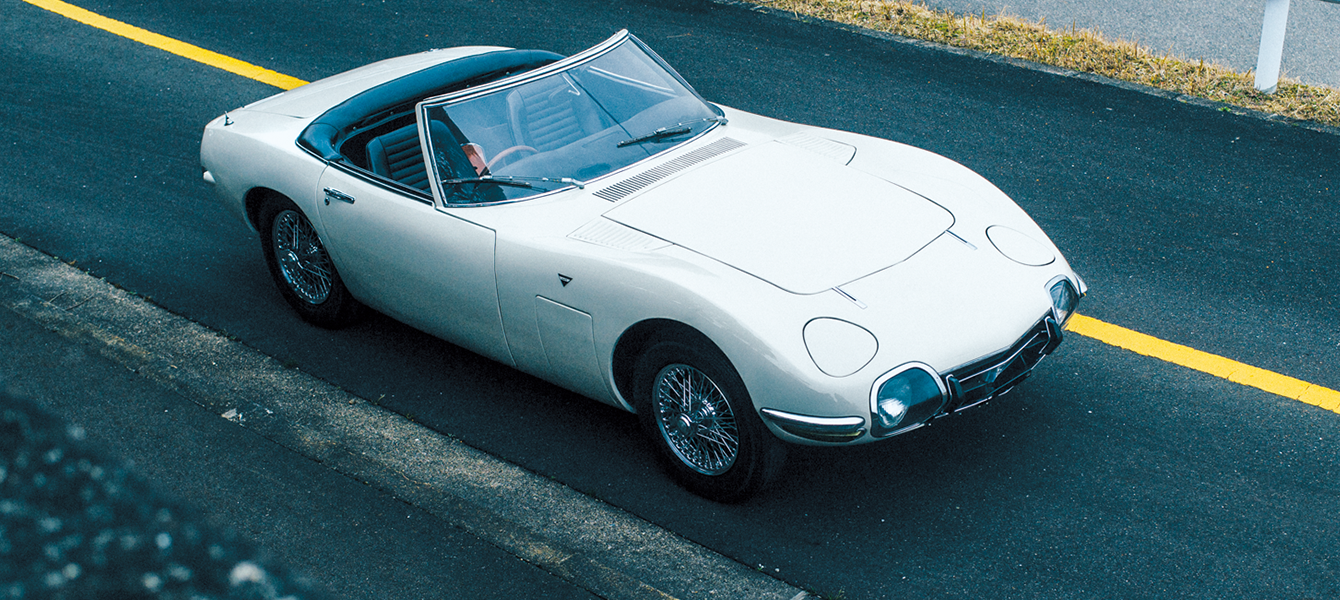
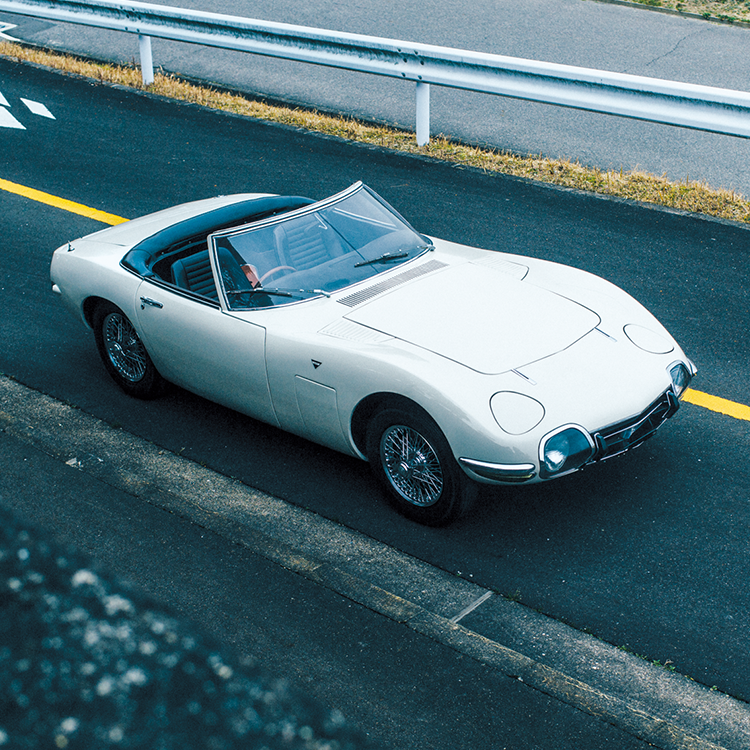


From T-TIME-Car Collection (No.98, Spring 2017)
TOYOTA 2000GT
Toyota 2000GT Early Model Specification
| Length | 4175mm |
|---|---|
| Width | 1600mm |
| Height | 1160mm (Bond car:1104mm) |
| Wheelbase | 2330mm |
|---|---|
| Engine Type | Water-cooled, in-line 6, DOHC |
| Total Displacement | 1988cm3 |
| Maximum Output | 110/150/6600(kW/PS/min-1) |
The Japanese Grand Prix began in 1963. Toyota was by no means satisfied with its own performance. The company would find it difficult to earn the world’s regard through it’s technology to produce passenger cars such as the Crown and Corona alone. The plan it concocted was for a world-class “gran turismo”, or GT car. Unlike a normal project to produce automobiles through the collective power of the organization, the 2000GT project was carried out by a small, elite team. The project codename was “280A.” Jiro Kono was selected as project leader, with Satoru Nozaki heading the design, Hidetaka Takagi the engine, and Shinichi Yamazaki the chassis.
Yamaha Motor cooperated in the development of the 2000GT. Already a global manufacturer in the motorcycle field, Yamaha Motor had earlier abandoned a GT car development project with Nissan. The cooperation originated with a visit to Toyota by then-President Kawakami to discuss joint development, just as Toyota was coincidentally planning the GT car. This was in the autumn of 1964.
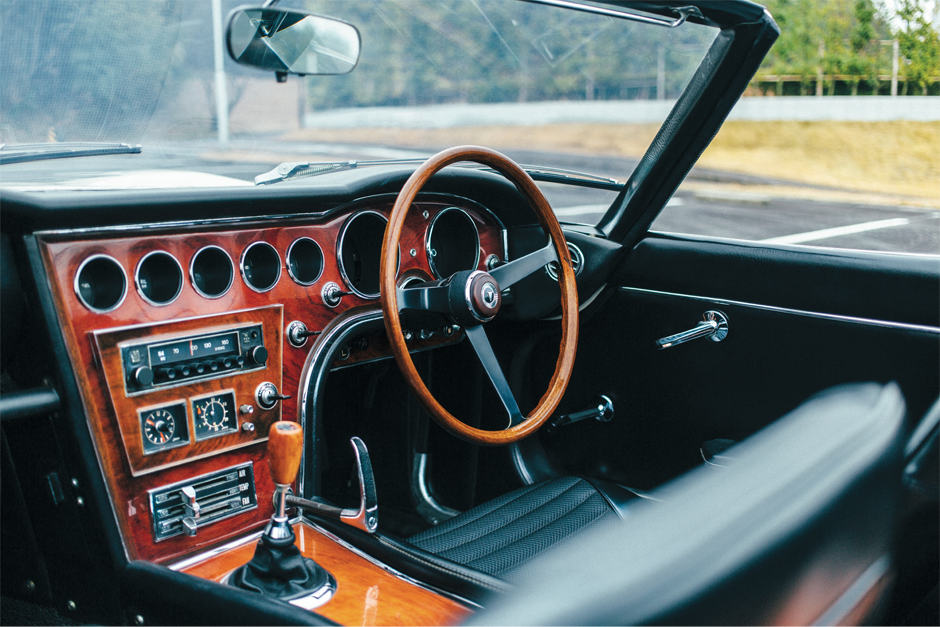
Toyota’s core staff was stationed within Yamaha, to work with Yamaha staff on the development. The first prototype was completed in August 1965. With speed unimaginable in a normal project, the 2000GT took shape. Fully leveraging the merits of a project run by a small group of elites, the team exhibited a second prototype at Tokyo Motor Show two months later in October. They then further improved performance in sights of a release in May 1967.
In order to prove that the car was a world-class, full-fledged GT, they needed a track record displaying it’s performance to the world. To do so, speed trials were conducted for three days starting on October 1, 1966. The trial targets included average speeds over 6, 12, 24, 48, and 72 hours of driving, and average speeds over running distances of 1000, 5000, and 10,000 miles. The car successfully set three world records and 13 international records in the 1500 to 2000cc E class.
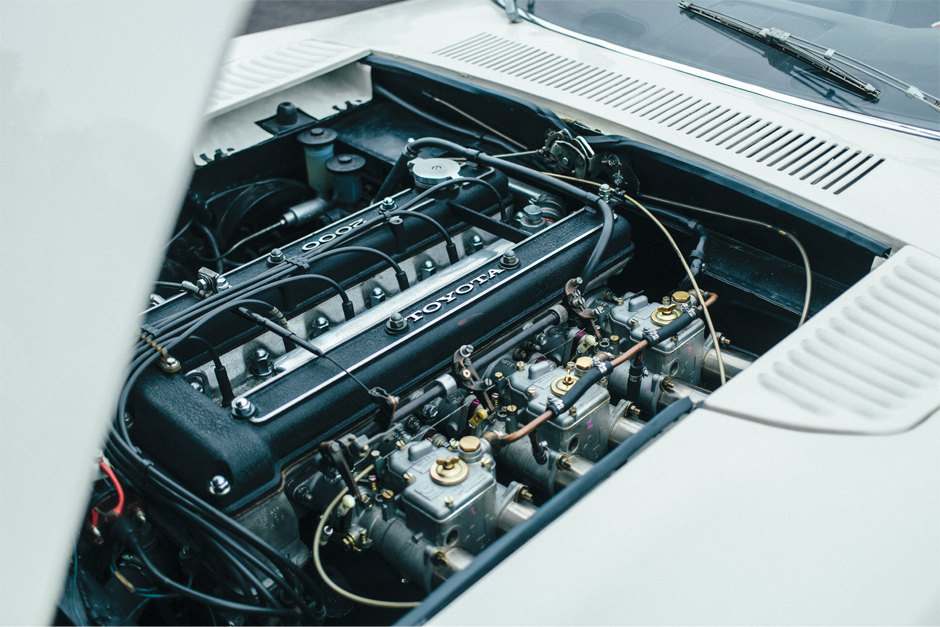
The 2000GT name was made well-known by the car’s appearance in the movie “You Only Live Twice “. This was the first movie in the massively popular 007 series to be shot in Japan, with the 2000GT used as a Bond car. More precisely, it was not a beloved car of James Bond, but a car belonging to Japan’s intelligence service and driven by a women named Aki who rescued Bond. The shooting took place in September 1966, with a very short preparation period. The Toyota team proposed a targa top, which can only remove the roof panel above, but the production team wanted a convertible to better shoot the actors’ faces. In consideration of form balance after removal of the roof, the car was lowered about 25mm from its original form, and a removable acrylic windshield was created for camera work. The production period was only two weeks. The movie premiered in June 1967. This was one month after the 2000GT was released.
The most advanced technology of the time was incorporated into the 2000GT. The suspension employed double wishbones in both front and rear to ensure maneuverability and ride comfort. The steering was rack and pinion, and the engine has been converted to DOHC based on the M-type engine for the crown, combining Yamaha’s technical strength.
The 2000GT boasted 150 HP, compared with about 50 HP for a typical passenger car of the time. Production was discontinued in 1970. The production was almost handmade, with a monthly production of up to 14, sometimes less than 10. The Toyota Museum currently has five of the cars, including the Bond car.
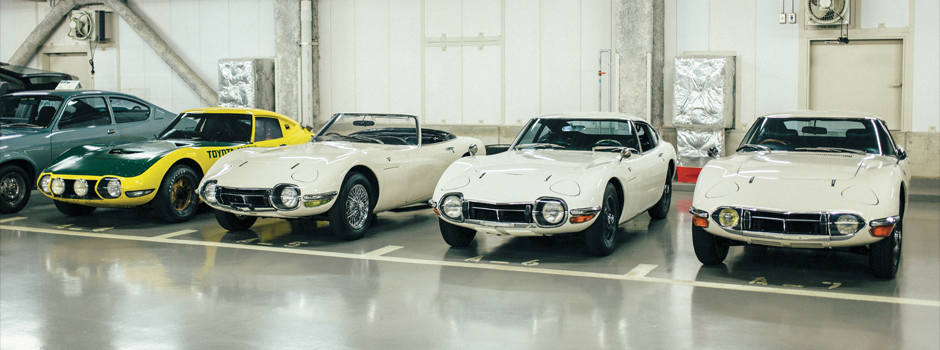
Photos, from left
TOYOTA 2000GT “Speed Trial”, 1966 (Replica)
The actual trial car were subsequently used in various tests, but was scrapped and no longer remain. This car, one of three that were taken to the United States for races by the Sports Car Club of America, was returned to Japan and was rebuilt to speed trial specifications. The front area and the fenders differ a bit from the original one.
TOYOTA 2000GT The“Bond Car”, 1966
Bond car. This is one of the two vehicles prepared for shooting. After it was used for sales promotion in the United States, a Toyota employee discovered it in Hawaii and it was brought back to Japan. Many parts had been rebuilt for shooting, including the rear trunk area and the cut rooftop. The interior has been restored to the condition of a factory production vehicle.
TOYOTA 2000GT Model MF10L, 1967 Early Model, LHD
An early model actually sold. The headlamps are retractable to maintain the height from the ground and to achieve a beautiful front nose. The interior boasted luxury specifications, such as a wood steering wheel made by Yamaha. Available body colors were Pegasus White, Solar Red, and Thunder Silver Metallic.
TOYOTA 2000GT Model MF10, 1969 Late Model
A late model with minor changes made in August 1969. The seats have headrests, there is a cooler, and some specification changes have been made. Comparing details of the early model and late model reveals that the auxiliary headlights were made smaller and the characteristic “face” was changed. The vehicle height was also increased by 10mm. Including the early model, 337 vehicles were sold.
Text: Toshiya Muraoka Photos: Kosuke Tamura
